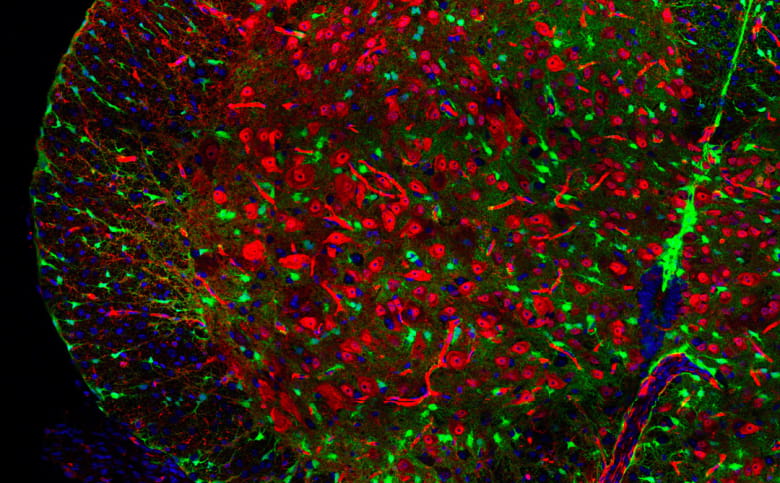
Seminar: plasticity of the spinal motor networks
October 2nd at 11:30 am at the IBDM (Luminy).
Seminar : Astrocytic modulation of neuronal rhythmicity through K+ uptake by Remi Bos
For the next NeuroSchool seminar, we are pleased to welcome Remi Bos, CNRS researcher at the Institute of Neurosciences of Timone, he will present his research on the plasticity of spinal motor networks. The seminar will take place on October 2, 2020, at 11:20 am, in the amphitheatre 12 of the IBDM (bat B) and is open to all within the limit of 30 places in the classroom (wearing a mask is mandatory).
For PhD students, please consider registering on Ametice via the link below.

After completing a first post-doc (2013-2016) in the Feller lab at the University of California in Berkeley (USA), I joined in 2016 the Brocard lab at the Institut des Neurosciences de la Timone (INT) in Marseille (France), where I study the plasticity of the spinal motor networks. I have been recruited as a CNRS permanent researcher since october 2018.
Mandatory registration for staff (maximum 30 people)
Can't attend the seminar in person?
We have set up a videoconferencing system via Zoom to connect. Please contact ingrid.meucci@univ-amu.fr to have the link.
Résumé
The CNS contains two major types of cell populations, neurons and glia. While glia has been for a long time overshadowed by neurons, their more electrically-excitable and popular partners, the development of improved tools allowed bringing new sights on the neuro-glia crosstalk. Astrocytes, the prevailing subtype of glia in the CNS, are highly interconnected and intimately communicate with neurons to ensure the development, maintenance, and function of the CNS. In particular, they modulate the neuronal excitability by changing the concentration of potassium ions in the extracellular environment, a process called K+ uptake.
Thus, my project aims to determine the astrocytic modulation of spinal locomotor oscillations. We hypothesize that astrocytic potassium (K+) uptake is crucial for tuning the locomotor central pattern generator (CPG) in an activity-dependent manner. In this CPG, K+ increase promotes rhythmogenesis and K+ homeostasis is mainly mediated by astrocytes. Though it is stated that the astrocytes process neuronal information and display calcium signals, there is still uncertainty about how neurons compute information from astrocyte network. In this project, by using transgenic mice, we determined how and to what extent the spinal CPG astrocytes (i) display distinct morpho-functional properties (ii), are active during rhythmic oscillations, and (iii) influence the locomotor pattern. By combining two-photon calcium imaging with electrophysiology and genetic tools, this project represents a significant breakthrough to (i) better understand how we walk and (ii) broaden the spectrum of therapeutic targets of movement disorders.

Neuro-astrocyte crosstalk in the spinal locomotor network.
Spinal astrocytes (green) trigger neuronal (red) low-frequency oscillations (blue).






